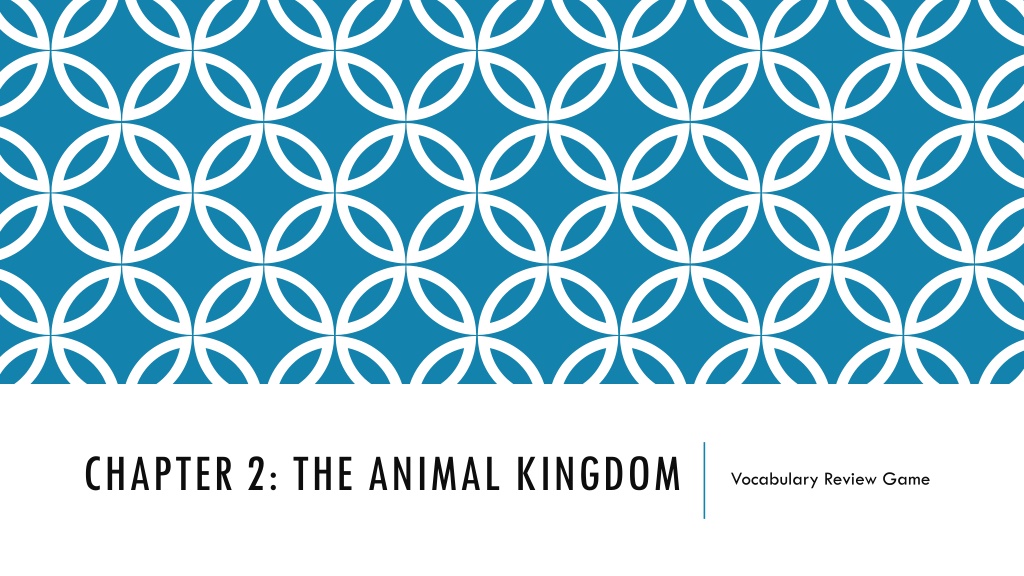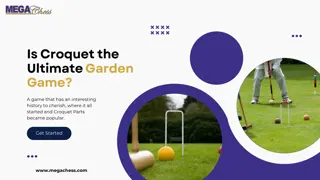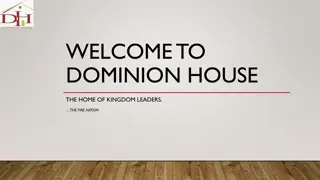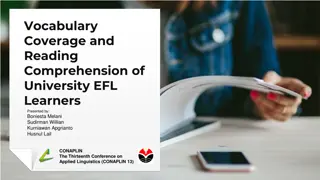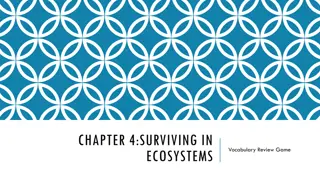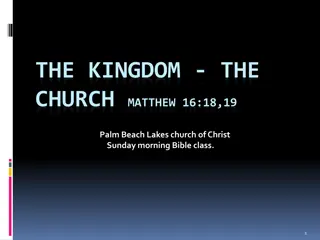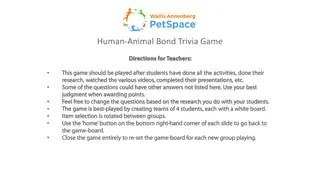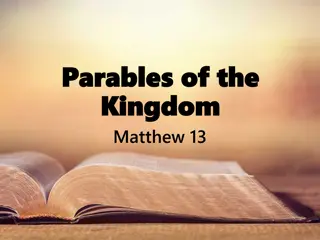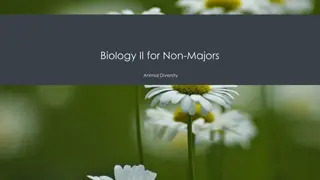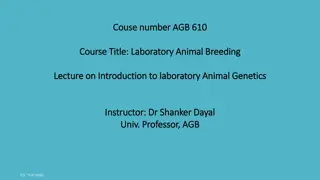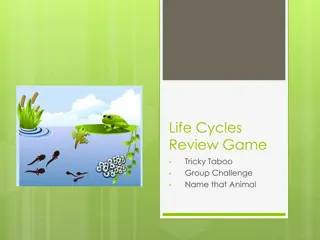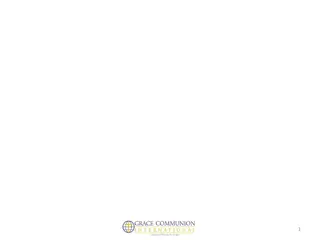Animal Kingdom Vocabulary Review Game
Test your knowledge of the animal kingdom with this vocabulary review game. Answer questions about invertebrates, vertebrates, and different types of animals to earn points for your team. Stay sharp to win classroom cash!
Download Presentation

Please find below an Image/Link to download the presentation.
The content on the website is provided AS IS for your information and personal use only. It may not be sold, licensed, or shared on other websites without obtaining consent from the author.If you encounter any issues during the download, it is possible that the publisher has removed the file from their server.
You are allowed to download the files provided on this website for personal or commercial use, subject to the condition that they are used lawfully. All files are the property of their respective owners.
The content on the website is provided AS IS for your information and personal use only. It may not be sold, licensed, or shared on other websites without obtaining consent from the author.
E N D
Presentation Transcript
CHAPTER 2: THE ANIMAL KINGDOM Vocabulary Review Game
DIRECTIONS! Each team member on your team was given a number. Don t forget your number! When I call aloud your number, you will be the scribe for your team for that particular round. Work together with the rest of your team to come up with the correct answer for each question. Remember, do not let other teams steal your answer. So, keep your whiteboards covered! You will have 1 minute to answer each question. If your team answers the question correctly, your team will earn a point. If your team s answer is incorrect, no points will be given. The team with the most points at the end of the game will win $2.00 classroom cash per player!
1. The hard outer covering that protects an invertebrates body is its _____________________ . A. backbone B. endoskeleton C. exoskeleton D. echinoderm
2. An invertebrate with jointed legs and a sectioned body is a(n) ______________________ . A. arthropod B. cnidarian C. segmented worm D. echinoderm
3. An invertebrate with poisonous stingers is a(n) _________________ . A. cnidarian B. arthropod C. invertebrate D. sponges
4. A soft bodied invertebrate, such as a clam or snail, is called a(n) _______________ . A. endoskeleton B. arthropod C. cnidarian D. mollusk
5. A spiny skinned invertebrate, such as a sea star, is called a(n) ______________ . A. echinoderm B. cnidarian C. arthropod D. vertebrate
6. True or False: A vertebrate is an animal without a backbone. False; A vertebrate is an animal with a backbone.
7. True or False: The simplest invertebrates are sponges. True!
8. What are the three types of worms that we talked about? ___segmented_______________ , ___roundworms_______________, And _flatworms________________.
9. An internal support structure in an animal is ____________________. A. exoskeleton B. vertebrate C. endoskeleton D. sponge
10. True or False: Some vertebrates, such as fish, amphibians, and reptiles, are cold-blooded and cannot keep constant body temperatures. True!
11. A vertebrate that spends part of its life in water and part on land is called a(n) ___________________. A. reptile B. amphibian C. fish D. worm
12. True or False: Fish do not have backbones. False! Fish are considered to be vertebrates.
13. A warm blooded animal has a body temperature that: A. Stays the same B. changes
14. A cold blooded animal has a body temperature that: A. stays the same B. changes with its surroundings
15. True or False Birds and mammals are considered to be warm blooded animals. True! These are the only 2 classes of vertebrates considered to be warm-blooded.
16. What animal kingdom do snakes, lizards, and turtles belong to? _____reptiles____________
17. The four classes of animals under the arthropod animal kingdom are: centipedes, crustaceans, insects, and ________________ . A. butterflies B. cnidarians C. arachnids D. manatees
18. True or False: Arthropods are considered the largest group of invertebrates. True!
19. True or False: Owls and sea urchins are considered to be non- symmetric animals. False! Owls and sea urchins are considered to be symmetric animals.
20. Bones make up a vertebrates ______________ system. A. muscular system B. circulatory system C. respiratory system D. skeletal system
21. In order for animals to get oxygen, they must have a _________________ system which brings oxygen to the blood, and takes carbon dioxide away from the blood. A.Excretory system B. Circulatory system C.Respiratory system D.Muscular system
22. True or False: Sponges have digestive systems with only one opening. True!
23. An organisms _______________ is how long it usually lives in the wild. A. life span B. metamorphosis C. heredity D. clone
24. What is the first stage of the butterfly life cycle? A.The female butterfly lays an egg B.The larva becomes a pupa and develops into an adult C.The adult animal becomes a butterfly D.A wormlike larva hatches from an egg
25. True or False: A clone is an exact copy of its parent. True!
26. True or False: The damselfly goes through complete metamorphosis during its life cycle. False!
27. True or False: Jellyfish reproduce by budding. True!
28. A series of very different body forms refers to _______________________ . A. heredity B. metamorphosis C. reproduction D. regeneration
29. BONUS** What is the life span of a koi fish? 100 years old!
30. BONUS** What is the life span of a moth? One week!
